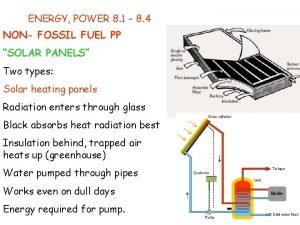Marine energy resource Wave and Tidal energy research

- Slides: 1

Marine energy resource Wave and Tidal energy research Introduction Marine energy Resource Assessment Pioneering research on wave and tidal power is being conducted at the University of Southampton. The Sustainable Energy Research Group at the School of Civil Engineering and the Environment has collaborated with several industrial partners and the National Oceanography Centre to focus of a wide range of research areas. Measured data from the wave and tidal energy resource is gathered and used to validate numerical simulation tools. Device performance and testing Development work on the commercial Pelamis wave energy device was conducted at the University. Scale trials are in progress for the new Anaconda device to design power take off systems and quantify energy yield performance. Satellite altimetry traces indicating wave power (left) and tidal current magnitude and direction at Portland Bill (right). Fluid dynamics Experimental results from flume tests and in-house developed numerical tools are used to quantify the fluid flow around devices Photo provided by Pelamis Wave Power Ltd Image provided by Checkmate Sea. Energy Ltd Pelamis offshore wave energy converter (left) and Artist's impression of the Anaconda wave energy converter (right). Extensive scale model tests have addressed issues such as tidal turbine blade design, cavitation and the flow field surround marine energy converters. Numerical simulation of a tidal energy farm (left), dual tidal turbine flow mapping experiment (right) Industrial project partners Cavitation occurring on a 2 D tidal turbine blade section (left) and 1/20 th scale turbine (right) www. southampton. ac. uk | www. energy. soton. ac. uk

